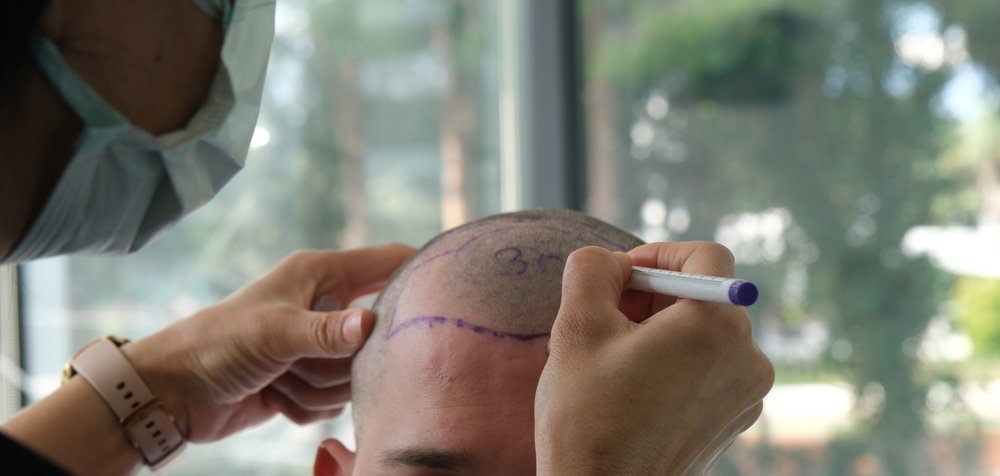Hair loss can be a distressing problem, affecting self-esteem and confidence. Thankfully, modern medical advancements offer solutions like hair transplant surgery, which can restore both the hair and the confidence of many individuals. However, before undergoing the procedure, it’s essential to grasp its intricacies, potential risks, and the recovery journey ahead.
Understanding the process, including consultations with surgeons, the surgical procedure itself, and post-operative care, is paramount for informed decision-making. Additionally, patients should consider factors like costs and insurance coverage, as hair transplant surgery is often considered an elective cosmetic procedure.
Despite these considerations, many find the benefits of regained hair and confidence well worth the investment and recovery process.
What Is the Most Important Part of a Hair Transplant?
The success of a hair transplant hinges largely on selecting the appropriate surgeon and clinic. The significance of this decision directly impacts the procedure’s outcome and the patient’s satisfaction.
It’s crucial to conduct thorough research to find a skilled and experienced surgeon who specializes in hair restoration.
Potential patients should scrutinize the credentials, certifications, and affiliations of the surgeon, ensuring they possess the requisite expertise in the field. Examining reviews and testimonials from past patients can give you an idea of the surgeon’s skills, professionalism, and the quality of care offered by the clinic.
Additionally, reviewing before-and-after photos of past procedures can help evaluate the surgeon’s track record and the clinic’s success in achieving natural-looking results. By prioritizing the selection of a reputable surgeon and clinic, individuals getting a hair transplant can greatly increase the chances of a successful result for themselves and a positive experience overall.
10 Hair Transplant Things to Know Before a Hair Transplant
Before delving into the intricacies of hair transplant surgery, it’s essential to grasp several key considerations.
Here are ten essential factors to know before undergoing a hair transplant:
Understanding the Procedure
Hair transplant surgery is a precise procedure where healthy hair follicles are taken from a donor area, usually the back or sides of the head, and placed into areas where there is baldness or thinning. This procedure aims to redistribute hair follicles to areas where hair growth has diminished, resulting in a fuller and more natural-looking head of hair. It’s crucial for individuals considering this surgery to thoroughly understand the intricacies of the procedure, including the different techniques and methods available.
Realistic Expectations
While hair transplant surgery can offer remarkable results for many individuals, it’s essential to have realistic expectations. This procedure may not be suitable for everyone, and the results can differ based on factors like hair texture, skin type, and the degree of hair loss. Consulting with a qualified surgeon can help individuals understand what outcomes are achievable based on their unique circumstances.
Types of Hair Transplant Methods
Hair transplant surgery typically involves two main techniques: follicular unit transplantation and follicular unit excision.
-
Follicular Unit Transplantation (FUT): In FUT, a strip of skin containing hair follicles is surgically removed from the donor site and then separated into individual follicular units for transplantation.
-
Follicular Unit Excision (FUE): In FUE, individual hair follicles are taken directly from the donor site using a specialized punch tool. This method leaves tiny, less noticeable scars and typically has a shorter recovery time than FUT.
Each method comes with its pros and cons, so it’s important to talk to your surgeon to figure out which option is best for you based on your individual needs and preferences.
Potential Side Effects
Like any surgical procedure, hair transplant surgery carries risks, including infection, scarring, and swelling. It’s crucial for individuals considering this procedure to be aware of these potential side effects and discuss them thoroughly with their surgeon beforehand. Understanding the risks involved can help people make a well-informed decision about whether hair transplant surgery is the right choice for them.
Preparation Before Surgery
Before having hair transplant surgery, your surgeon will give you detailed instructions to follow to achieve the best results and decrease the chance of complications. These instructions may include avoiding certain medications, alcohol consumption and smoking in the days leading up to the procedure. By following these guidelines diligently, individuals can help ensure a smooth and successful surgery.
Aftercare and Recovery
The recovery phase following hair transplant surgery is vital for obtaining optimal results. In the days following the procedure, individuals may experience some discomfort, swelling, and scabbing in the donor and recipient areas. It’s essential to follow your surgeon’s instructions for proper aftercare, which may include gentle washing of the scalp, avoiding strenuous activities, and taking prescribed medications as directed. Proper aftercare can help promote healing and minimize the risk of complications.
Hair Transplant Results
Patience is key when seeing the results of a hair transplant. While some people may start to notice new hair growth a few months after the procedure, it can take a year or longer for the transplanted hair to fully grow and blend in with the existing hair. Understanding the timeline and stages of hair growth post-surgery can help individuals manage their expectations and stay patient throughout the process.
Cost Considerations
Hair transplant surgery can be a vital investment, and the cost varies depending on factors like the surgeon’s expertise, the extent of the procedure, and the location of the clinic. It’s essential for individuals considering this procedure to factor in the cost of the surgery, as well as any additional expenses for aftercare products and follow-up appointments. While the upfront cost may seem daunting, many individuals find that the long-term benefits of restored confidence and self-esteem outweigh the financial investment.
Long-Term Maintenance
While hair transplant surgery provides permanent results, it’s important to understand that ongoing maintenance may be required to preserve the results. This may include using specialized hair care products, like shampoos and conditioners designed to promote hair growth and thickness, and following a healthy lifestyle to prevent further hair loss. Consulting with your surgeon can help develop a personalized maintenance plan to ensure long-lasting results.
Consultation with a Specialist
Before committing to hair transplant surgery, it’s important to arrange a consultation with a qualified hair restoration specialist. In this meeting, you can talk about your goals, worries, and hopes with the surgeon. They can then evaluate if the procedure is right for you and suggest the best treatment plan. A thorough consultation allows individuals to make informed decisions about their hair restoration journey and ensures they are well-prepared for the surgery and recovery process.
Conclusion
Hair transplant surgery can be transformative for people dealing with hair loss, but it’s essential to approach the procedure with caution and thorough research. By understanding the process, managing expectations, and choosing a reputable surgeon, you can increase the likelihood of achieving successful and satisfying results. Remember, the journey to restored confidence begins with informed decisions and careful planning.











